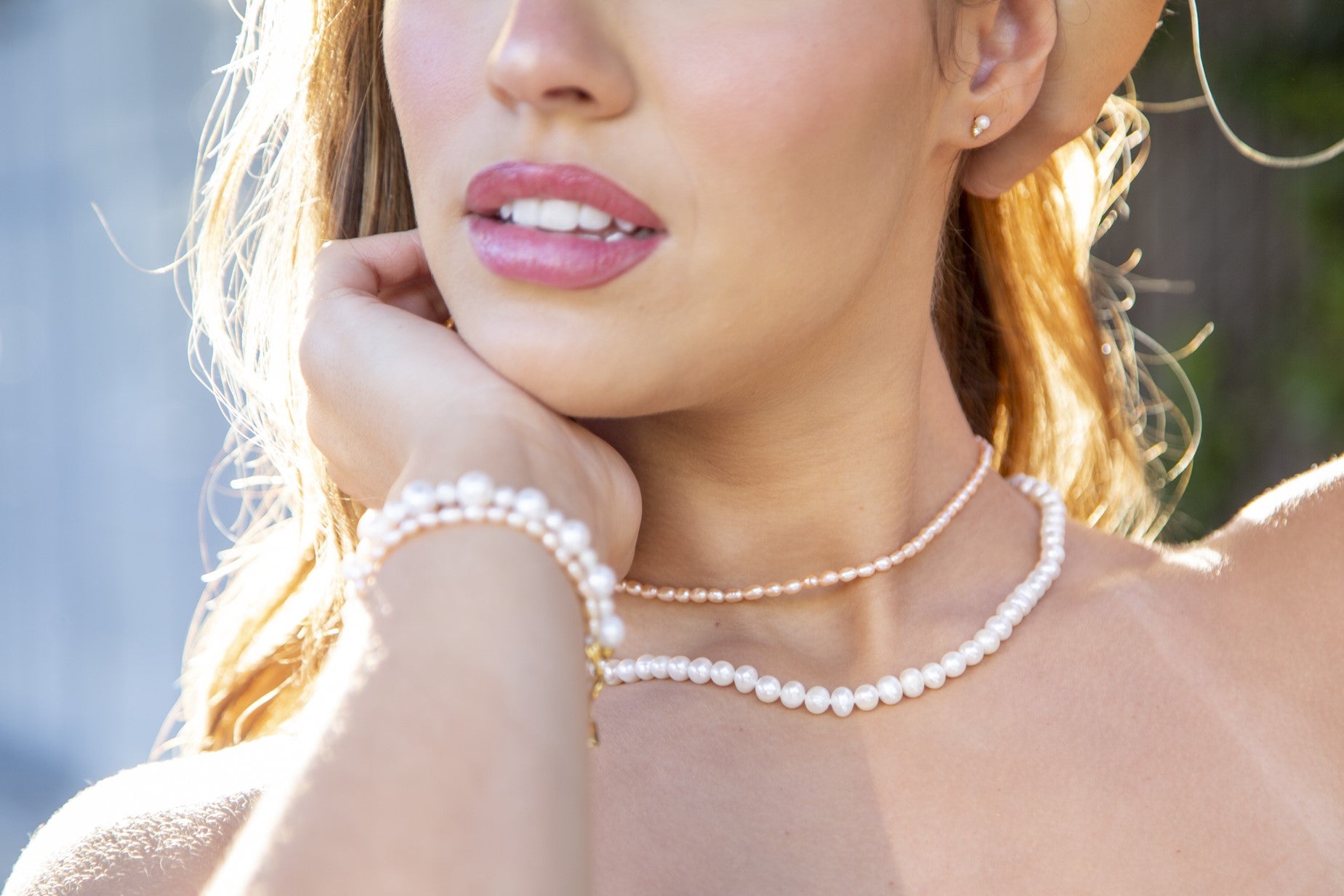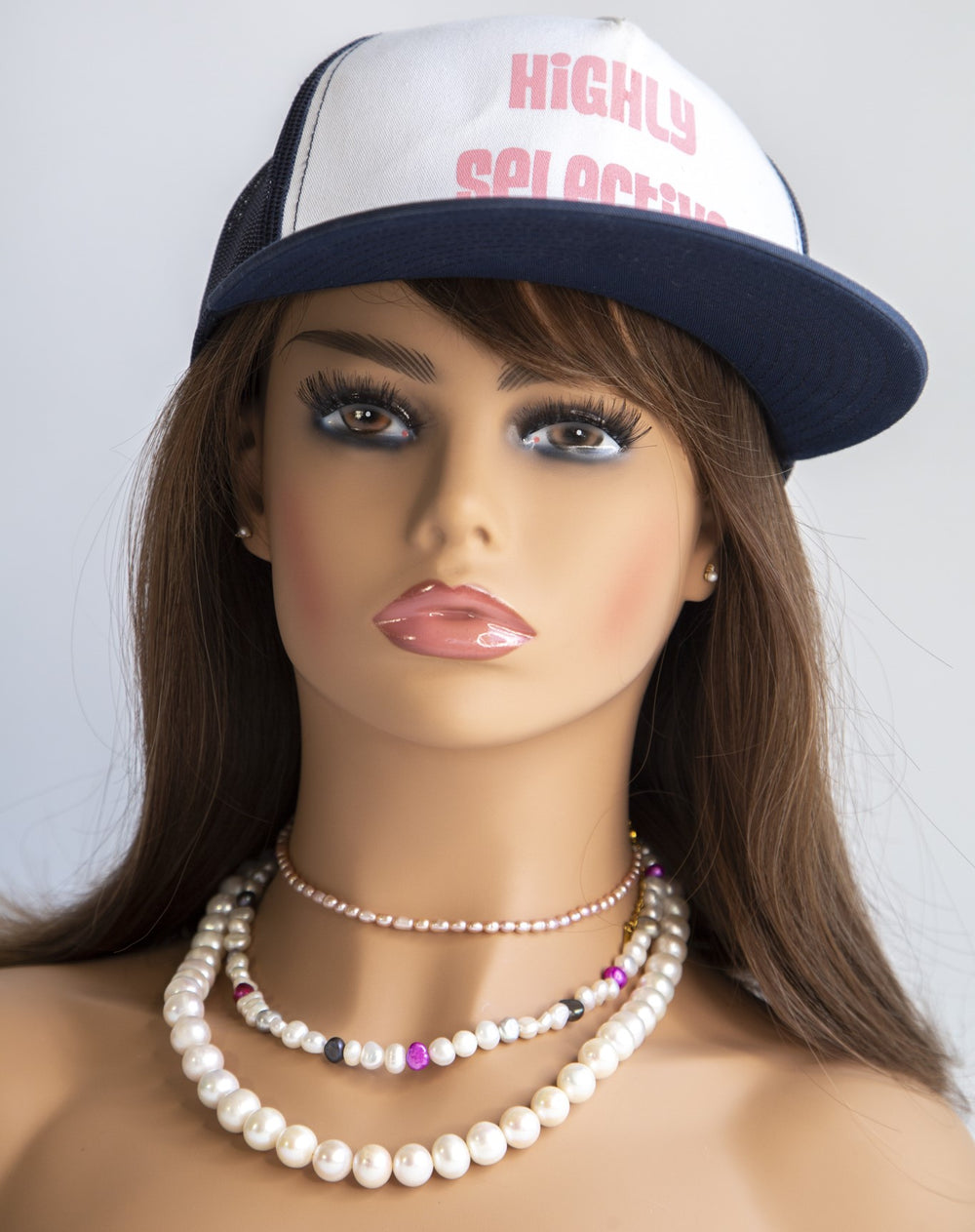How To Spot A Fake Pearl
Here at PERAL, we only sell genuine freshwater pearls. It is our goal to ensure that you have an educated understanding of what type of "pearl" products are out there so you can make the most informed decision possible.
The beauty of pearls is that every pearl is unique and one-of-a-kind. There is no such thing as a perfect pearl, but if you spend enough money, you can find one that is darn close. The freshwater pearls that we sell are high-quality in that they have good luster and minimally noticeable blemishes.
So how can you spot a "fake" pearl when shopping online?
- Material description says "shell pearl" or "glass pearl": you will notice that many companies use "freshwater pearl" in the product title, but then mention in small text that it is "shell pearl" - this is the equivalent of a plastic bead
- It looks TOO good: if you see a pearl necklace for $20, $30, $40 and every pearl looks perfectly circular with no noticeable blemishes in the close up picture, it is almost certainly not real as perfectly shaped pearls with no blemishes sell for hundreds of dollars
Now let's say you already have the pearls in hand, there are a few tricks you can deploy to assess if the pearl is genuine:
- Look: Same as above, if you notice no blemishes and they all look exactly the same, it is either fake or very high quality pearls
- Feel: Real pearls are cold to the touch; if you have not been wearing them, touch them to your face, they should feel cold and remain that way for a brief amount of time
- Reflection: Hold the pearls up to a light; with real pearls you should see a smoothed reflection of the light in them; fake glass pearls will reflect more like a mirror
- Drill Hole: Look at the drill hole of the pearl; real pearls generally have a very small hole and no chip; fake pearls often have a larger hole and sometimes a chip around the edge of the hole
- Tooth Test: *our favorite* Real pearls are gritty - when you rub them against your teeth, you should feel a slight grit, whereas glass/ plastic pearls would be smooth
As the newest Level-1 Pearl Sommelier, now its time to brush up on key characteristics that drive value in pearls...
| Origin |
Saltwater (natural to Australia, Tahiti, Thailand, and Indonesia) vs Freshwater (all over world) Natural vs Cultured - almost all pearls are cultured as the natural process takes many years |
| Shape |
Round, near-round, tear drop, button, potato, irregular/ baroque, and many more... with round being most expensive |
| Luster |
Shine and reflectiveness; generally rated on AAAA to A scale; biggest factor in value |
| Color |
White pearls - cream and ivory are most prized, with pure white as lowest; other natural colors such as black and gold saltwater pearls are much more rare |
| Surface Blemishing |
All pearls have some type of blemishes, such as pin pricks, marks, spots, and wrinkles; less blemishes are more valued |
| Size |
Most pearls are smaller than 10mm; pearls over 10mm are significantly more expensive |
Hope you learned something new today! Now get out there and put on some pretty pearls.












